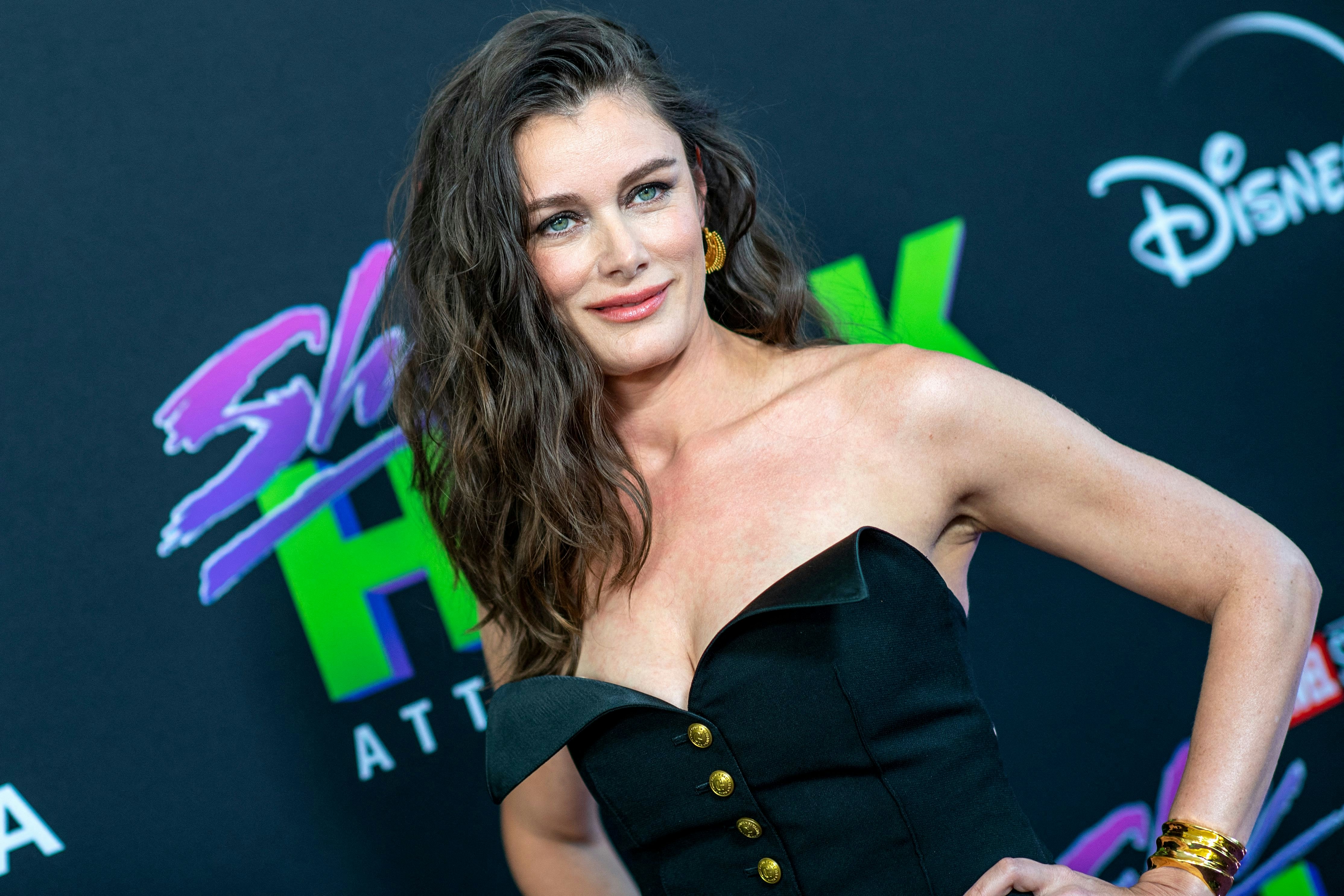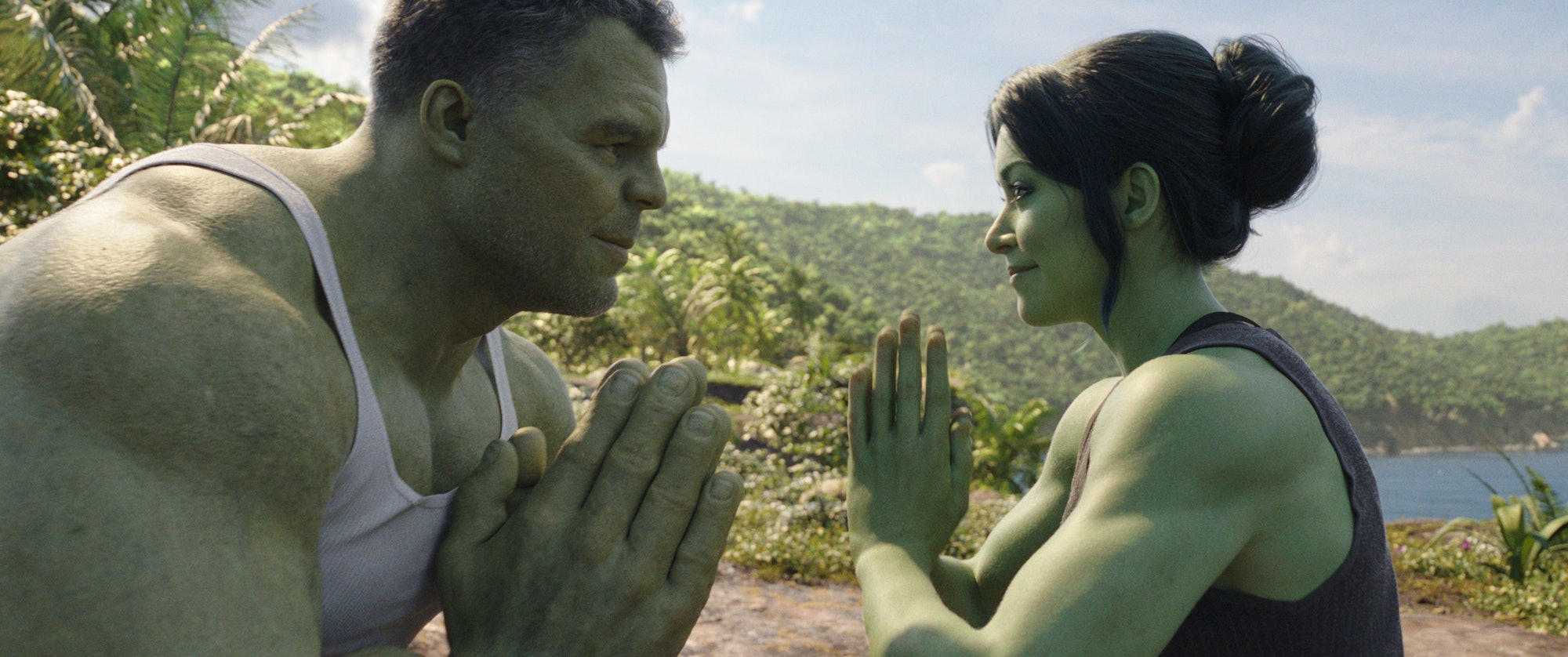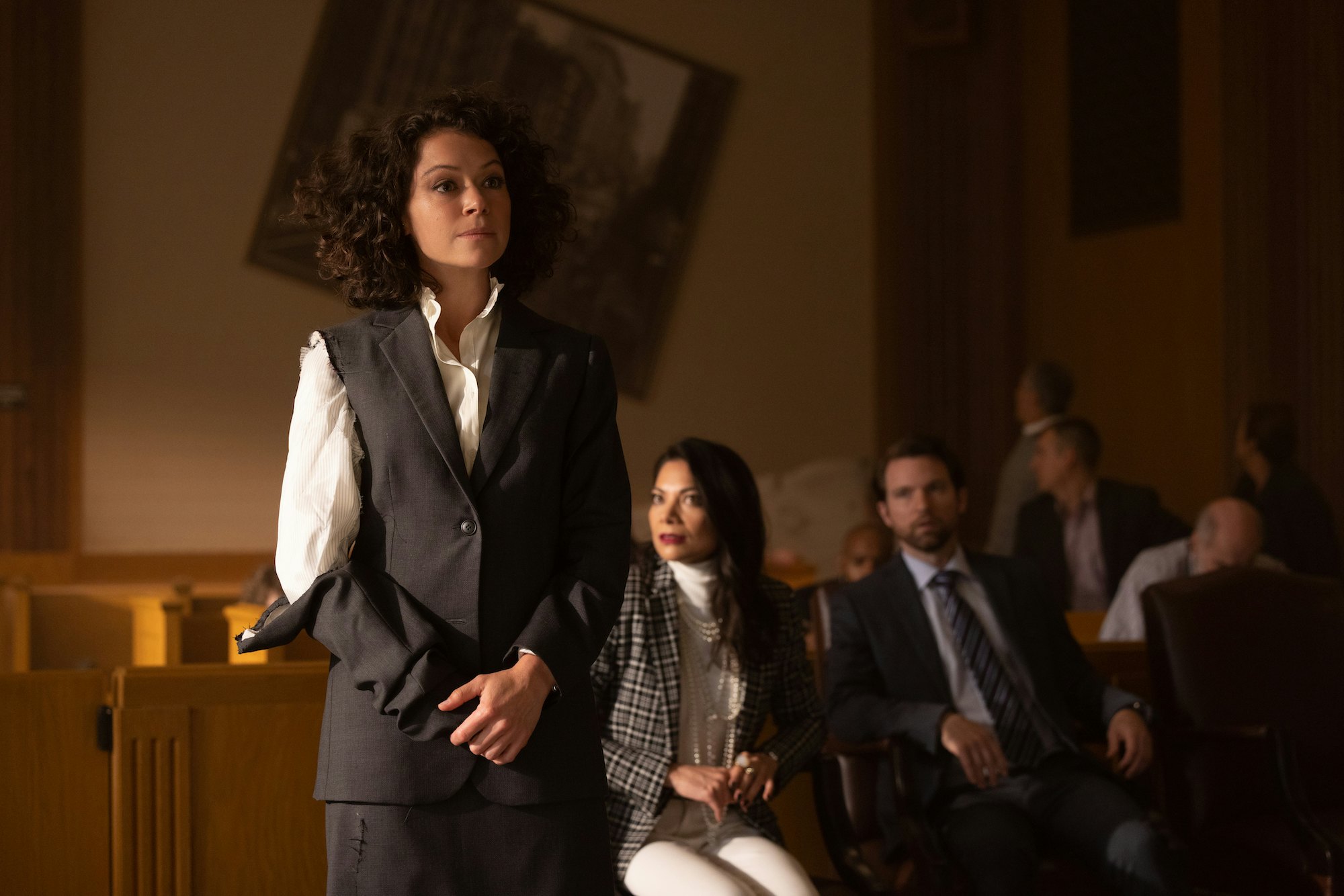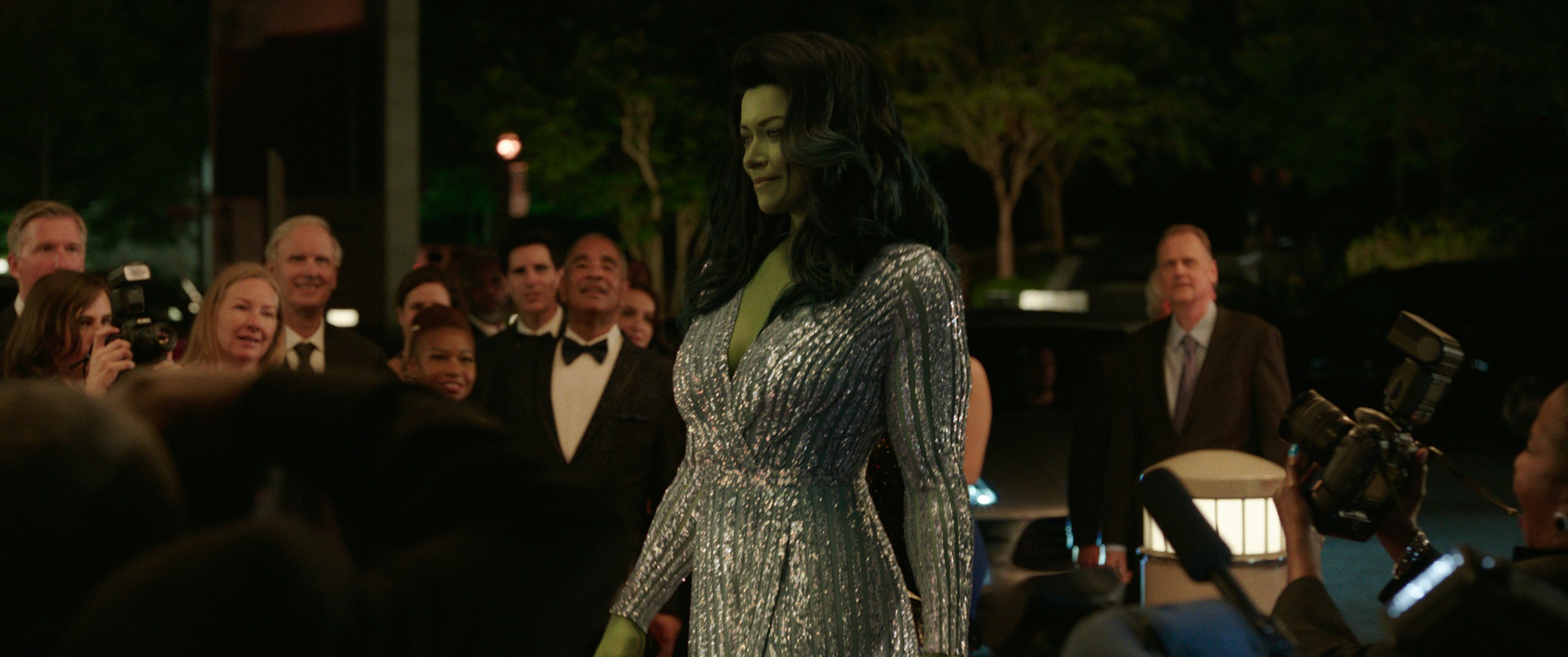
Kat Coiro’s origin story, like so many in the Marvel universe, takes place in New York City.
Wandering into what she describes as a “little bookstore slash comic book store,” an adolescent Coiro first saw She-Hulk as an impressive, imposing female figure taking up as much space as she could away from other buff and tough men.
“I remember seeing She-Hulk, standing in her super suit like this,” Coiro tells Inverse over Zoom, posing with her arms flexed. “I saw it amidst all these other covers and I said, ‘I need to have this.’”
Flipping through its pages, the future director of movies and TV (who grew up without a TV) would have her mind further blown by a superhero who refused to stay drawn within the lines. “I remember seeing her walk across the advertisements, yelling at the writers, and breaking all the rules,” she says. “It felt fresh and new. As a little girl, I thought, ‘I want to grow up to be like that.’”
A film and TV director with a body of work made up of micro-budget dramedies and sitcoms, Kat Coiro has indeed grown up to be sensational like She-Hulk, now in her own Disney+ series She-Hulk: Attorney at Law directed and produced by Coiro.
“I’m going to stand in my power.”
Though she isn’t exposed to gamma radiation nor does she have green skin, Coiro has succeeded by similarly breaking rules (in one case in her career, very literally) and redrawing the boundaries of what’s expected from women with even an ounce of power. “As a director, I’ve always felt like my job is to disappear and not take up attention,” Coiro says. But as she embarked on the press tour for She-Hulk, Coiro’s quietly made the decision to stand out.
“I’m going to dress up. I’m going to stand in my power, if you will,” she says. “Just because I’m a director doesn’t mean I don’t like pretty clothes. That’s a direct result of working on She-Hulk, this idea that we can be many things at one time and that we don’t have to be defined by our job or looks. We can honor ourselves and stand in our truth.”
Over Zoom, Coiro meets with Inverse armored in a cream-colored power suit, flowing brown locks with the texture of beachy waves, and hazel eyes that pierce even through a webcam. Kat Coiro looks like a charismatic attorney that Jennifer Walters might call a colleague. But in truth, she has more in common with She-Hulk than meets the eye.

Kat Coiro didn’t always like breaking rules.
Following her childhood in New York, her family of English and Italian descendants moved to Miami. During the Haitian coup in 1991, her parents took in refugees, some having narrowly escaped death. One of them personally witnessed their entire family murdered by a firing squad. “We lived with Haitian refugees and learned a lot about the culture,” she says.
Eventually, her parents opened a Haitian restaurant, Tap Tap, a popular local spot until it closed in 2019. (Her favorite dish was the conch fritters.) Coiro’s family lived in an apartment above the restaurant, where she found that trying to do homework amidst all-night Haitian raves was not the most productive environment for her academic goals.
“It was a very raucous place,” Coiro remembers with fondness. “I was a very studious young child who just wanted to sleep early. People called me Tracy Flick.”
In ninth grade, Coiro enrolled at Interlochen Arts Academy, a boarding school in frigid Michigan where the snow piled high to her dorm room window on the second floor. In those years, Coiro traveled back every summer to Miami, where she waited tables at Tap Tap (including once for Bob Marley’s mother). All the while she was studying to be an actor, on the influence of one woman in one role: Julie Andrews in Mary Poppins.
To Coiro, Hollywood was “not a part of my life growing up at all,” she says. “We didn’t have a television for a long time. But we did have a VHS of Mary Poppins. I watched Mary Poppins probably 300 times. The reason I got into acting was because all I could see was Julie Andrews. I thought I wanted to be part of that, therefore, I’ll be an actress.”
Coiro spent all of her academic career in pursuit of acting, but as soon as she began working, “I started to see the other side of storytelling,” she says. “I saw directors and production designers and cinematographers. I realized I was in love with the process of storytelling, not just acting. I made the switch quickly. I never looked back.”


More than just a “Lady Hulk,” She-Hulk is one of Stan Lee’s last creations at Marvel (made with the late John Buscema) whose legacy is turning expectations of mainstream comics on its head.
A fan favorite and cousin to the Incredible Hulk, Jennifer Walters (aka She-Hulk) made her debut in The Savage She-Hulk in 1979. She later starred in the more popular sequel, The Sensational She-Hulk, which ran from 1989 to 1994 under writer and artist John Byrne. Armed with irreverent humor and unabashed, confident sexual liberation, She-Hulk was the avatar for a vibe shift in comics as she broke ground in what’s expected from female superheroes.
She-Hulk notably broke the fourth wall before Deadpool, speaking directly to readers, and she even had storylines involving her comics’ writers. She-Hulk smashed ideas of what female superheroes could be for a generation of comics collectors.
“She has such a unique take on breaking the fourth wall,” says Coiro. “It has to do with being aware of the narrative put upon you. When I talk about being inspired by She-Hulk, it’s this idea of a woman controlling her narrative. So often in comic books, women are along for the ride. They’re not driving the story. Part of Jennifer Walters’ story is realizing someone else’s hand is on the wheel, and she wants to control how she gets to where she gets.”
“She has such a unique take on breaking the fourth wall.”
The characters who take center stage in Kat Coiro’s work don’t usually have powers (nor do they break the fourth wall), but they are almost always women in overwhelming circumstances.
In her 2011 freshman feature Life Happens, a young woman (played by Krysten Ritter) becomes a single mother after a one-night stand, and her efforts to raise her child redefine her relationships with her closest friends. And While We Were Here, Coiro’s second film, stars Kate Bosworth as a woman in a loveless marriage who begins an affair with a 19-year-old in Naples.
The latter film notably had Kat Coiro breaking rules — legally. Due to its lean budget of $150,000 and abbreviated timetable during Coiro’s pregnancy, production necessitated more creativity than usual on a film set.
After working with Bosworth on a Funny or Die sketch, the movie star personally asked Coiro to write and direct something for her to star in. “I was pregnant, so I was like, ‘I’ve got to crank this out before I have this baby,’” she says. “I wrote it knowing we had no resources.”
To make up for the lack of production value, Coiro opted for breathtaking scenery provided by the ultimate set designer: Mother Nature. She wrote the script based on locations she found on Google Earth. “I had three actors and my producer, who had this connection to the island of Ischia. If we’re going to make something with no money, one 5D camera, and no lights, let’s shoot somewhere gorgeous. All of our money went to flying us out there.”
Since it was shot over 11 days, there wasn’t enough time to secure legal permission at every location. They shot in those places anyway. “Don’t get me in trouble,” Coiro laughs. “We didn’t have a crew. We had one little camera. It was really as if we were tourists doing a home video.”
Coiro may have committed crimes in the pursuit of making art, but she got away with something more valuable in the long run. “It was a real lesson in filmmaking because you have to be flexible and think on your feet,” she says. “We would run around based on where the light was beautiful. It was a magical experience, artistically.”
Coiro wouldn’t shoot another movie for years until the pandemic-delayed Marry Me, which opened in theaters and on Peacock. As Coiro’s other comics adaptation of 2022, the movie follows a pop star (Jennifer Lopez) who spontaneously marries a single father (Owen Wilson) after learning of her fiancé’s affair.
In between her features, Coiro spent time honing her skills in television, directing episodes of Brooklyn Nine-Nine, Mozart in the Jungle, It’s Always Sunny in Philadelphia, and Shameless. For Coiro, making films with shoestring budgets came with “so many compromises,” which resulted in a frustrating juxtaposition between the work put in versus the work displayed.
“You never want to show a movie with caveats,” she says. “I found that with the films I was making. I was proud of the work. I knew we’d pulled off something almost impossible, but at the same time, it wasn’t living up to the standards I had in my head.” So Coiro pivoted to television, to join “a more systemic flow, where there’s more resources and support.”


Few of Coiro’s movies are loved by critics; her highest-rated on Rotten Tomatoes is Marry Me, at a divisive 61% Fresh rating. But as low-budget originals, her work has been something of a valued endangered species, at least under the shadow of today’s behemoth franchises.
“Something funny I learned in making Marry Me is that people say women don’t go to the theater, and that’s why they’re not making female-led content. But it’s not true,” Coiro says. “I think the dearth exists because it’s not being made. Marry Me was not only No. 1 during Omicron, it was huge on streamers. I always thought if they released just in theaters, we would have blown up. It just takes making more films for women, and women will come.”
A combination of Coiro’s reputation to get things done and her preoccupation with complicated women got her into orbit with one of the biggest franchises today. Her journey into the MCU began just as the Covid-19 pandemic upended everyday life.
“I was coming off of working with Jennifer Lopez, who is a bit of a superhero,” Coiro jokes. “But I was so excited to join the MCU because I am a fan. It felt organic to step into this. The fusion of big MCU spectacle with small, intimate, comedic, sometimes even mundane moments was the biggest challenge of the show.”
“Even if it’s a reinvention, it really does come back to the comics.”
While spending quarantine at her mother-in-law’s house in Princeton, New Jersey, Coiro and her husband excavated from a dusty basement the latter’s personal collection of, in Coiro’s words, “every Marvel comic ever” from the 1970s to the 1990s. Of course, there were a lot of She-Hulk.
“We went into the basement and we got all the old She-Hulk [books],” Coiro tells Inverse. “When I went into my production office, I would have them. Whenever I had questions, I would look at the comics. This is the essence; this is what we’re going for. Even if it’s a reinvention, it really does come back to the comics.”
While the comics were a North Star, Kat Coiro still relied on instinct drawn from her own lived experiences. “I choose everything based on character,” she says. Whether it’s a project she’s written or not, Coiro asks a simple question before every job: “Are they characters I relate to?”
“Being an artist is so much about using your own personal experience,” Coiro observes. While Coiro hasn’t lived exactly like all her subjects, she finds parts of herself in them, even in a superhero. “She-Hulk is a fascinating character to me. This idea of maintaining a sense of self despite presenting in a completely different way, and how other people’s perception of you affects who you are, that’s a theme I enjoy exploring.”
In She-Hulk: Attorney at Law, Tatiana Maslany stars as Jennifer Walters, a Los Angeles lawyer and cousin of scientist Bruce Banner (Mark Ruffalo), the Avenger known as the Hulk. After a car accident exposes Jennifer to her cousin’s gamma-radiated blood, Jennifer’s life is upended when she transforms into the She-Hulk and begins a new career overseeing legal cases involving all things super.
While set in the tonally diverse Marvel Cinematic Universe, She-Hulk stands out as a lighthearted comedy that pushes the limits one might assume are in place for a Disney platform. It’s never graphic, but She-Hulk is the first Marvel production in years to talk about sex and dating in the way most adults do. It’s also about a female superhero who does not want to be one because being a woman in the modern world is already a life-threatening challenge on its own.


“The fact she is a reluctant superhero is what makes her interesting,” Coiro explains. “She is a woman who has worked hard to get where she is, and it’s cost her. She has student debt, she’s sacrificed her social life. Now she has powers that put her on a different level from all other human beings. She thinks so deeply everything she’s worked so hard for will be torn asunder by powers she didn’t ask for. Part of the progression is watching her accept that’s who she is.”
On a macro level, Kat Coiro believes that the story of She-Hulk is a metaphor for how male-dominated societies limit the stature of women in all terms, not just physical.
“My tall girlfriends say that when they were growing up, they would hunch over and not wear heels,” she says. “Society is constantly telling women to be smaller. It’s not just physical; it’s mental. You’re not supposed to take up space. You’re not supposed to be loud. You’re not supposed to show anger. Something we explore is the idea that male rage is acceptable and a huge part of comic book narratives. We loved exploring when a female superhero gets angry. If her anger is a 10th of her counterpart, the ‘He-Hulk,’ how is that perceived?”
“Strip away everything else, you’re looking at a story about a woman in her 30s.”
She adds, “To watch someone accomplished like Jennifer Walters be afraid to walk into a room and have all eyes turn on her is really fun to watch how she handles that.”
In spite of She-Hulk’s amazing powers, which also meant Coiro’s first time working with complicated visual effects — to achieve proper framing, the production strapped on Maslany’s head a stick with a cardboard Hulk head on top, and Coiro had to remind her actors to look at it “and not Tatiana’s very engaging eyes” — She-Hulk: Attorney at Law belongs in Coiro’s canon as much as it does the MCU.
“Strip away everything else, you’re looking at a story about a woman in her 30s,” she says. “Even though it’s superhero-oriented, I don’t think that’s what it’s about underneath. I am drawn to character rather than genre.”
She-Hulk: Attorney at Law begins streaming on Disney+ on Aug. 18.







